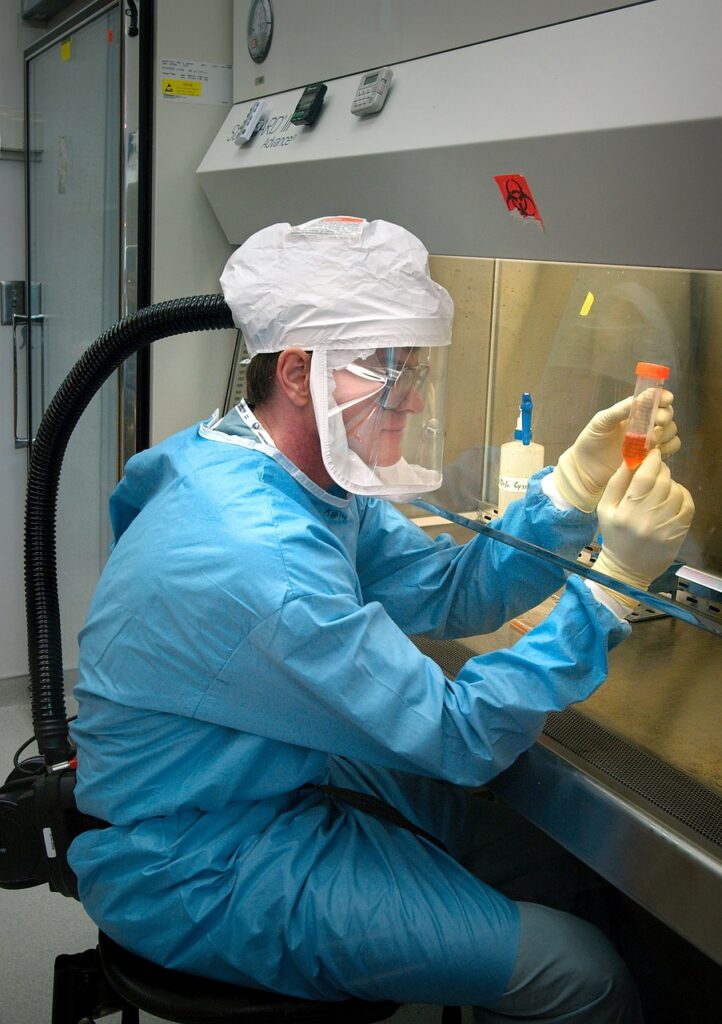Research is ongoing into the effects, properties, and mechanisms of Thymosin Beta 4 peptides and its synthetic analog TB-500. This piece will discuss the latest Thymosin Beta 4 (TB-500) peptide research.
Thymosin Beta 4 and Hepatic Stellate Cells
Studies suggest that hepatic stellate cells’ activation and migration may be stimulated by the naturally occurring Thymosin Beta 4. Activation, proliferation, and movement of hepatic stellate cells are critical steps in the progression of liver fibrosis; blocking or reversing these processes might lead to novel therapeutics for treating fibrosis and cirrhosis. The major goal of the research by Shah et al. was to examine the potential anti-fibrogenic effects of Thymosin Beta 4. Early passages of hepatic stellate cell cultures were presented with Thymosin Beta 4 peptides or PDGF-BB, and then RT-PCR, Western blotting, and proliferation and migration tests were performed. Results from the research suggested that Thymosin Beta 4 peptide may suppress PDGF-BB-induced activation of hepatic stellate cells via effects on proliferation and migration, activation, and fibrogenesis. The outcomes were published in the January 2019 Expert Opinion on Biological Therapy edition.
This is achieved by inhibiting AKT phosphorylation at serine (S473) and threonine (308). Findings suggest that individual bioactive peptides of Thymosin Beta 4 may affect the proliferation and migration of hepatic stellate cells through its actin-binding region.
TB-500 Peptide and Inflammation
Although Thymosin Beta 4 has been suggested to have anti-inflammatory effects, further study is required to draw firm conclusions. The potential for Thymosin Beta 4 to regulate brain inflammation was first speculated in a review article published in July 2018.
Research published in Biomedical Reports looked at the potential effects of Thymosin Beta 4 on mitigating rheumatoid arthritis. They acknowledged that the mechanism of action of Thymosin Beta 4 is still unclear, but they posited that it may play several roles in the pathogenesis of rheumatoid arthritis.
Therefore, it is unclear whether the elevated levels of this compound in serum and joint fluid of rheumatoid arthritis research models are associated with pro- or anti-inflammatory activity. However, a study published in PLoS One suggested that Thymosin Beta 4 activation might be a target for inflammatory osteolytic diseases like periodontitis. Through activation of MAPK and NF-B pathways, this peptide may potentially suppress inflammation in PDLCs.
Thymosin Beta 4’s alleged anti-inflammatory properties may potentially speed up healing cycles in damaged or inflamed tissues. This is especially crucial when considering that an inflammatory response to muscle injury may hinder and extend the healing process by preventing the regeneration of injured tissue and causing muscular atrophy.
TB-500 Peptide and Wounds
New research purports that Thymosin Beta 4 may exhibit potential in tissue repair. By inhibiting apoptosis and displaying anti-inflammatory effects, it was speculated by Sosne et al. to facilitate corneal healing. Recombinant Thymosin Beta 4 has been implied in other research as a cost-effective method of facilitating wound healing and endothelial cell proliferation, migration, and capillary formation. Research is ongoing.
TB-500 Peptide and the Heart
Frontiers in Pharmacology published an article examining whether Thymosin Beta 4 may be used to help pigs with cardiac ischemia-reperfusion damage. After 60 minutes of cardiopulmonary bypass and aortic clamping, the animals were given either Thymosin Beta 4 or a control compound. Despite encouraging preliminary trials, this research could not prove that Thymosin Beta 4 might aid myocardial ischemia-reperfusion damage.
However, a pilot experimental trial conducted by a different group of researchers suggested that Thymosin Beta 4 may have successfully exhibited impact in clinical research models of acute ST-segment elevation myocardial infarction. In the Thymosin Beta 4 group, the left ventricular ejection fraction based on two assessments appeared to have risen by 50% after six months, and the stroke volume seemed to have improved by 50%. Models’ average six-minute walking distance seemed to have increased by 14% after six months of follow-up. In addition to being the first study of its kind, this research highlights the potential of the peptide in repairing and regenerating damaged tissue to enhance cardiac function following heart attacks.
Visit Core Peptides for more educational and useful data on peptides and find high-quality research compounds.
References
[i] Shah R, Reyes-Gordillo K, Rojkind M. Thymosin β4 inhibits PDGF-BB induced activation, proliferation, and migration of human hepatic stellate cells via its actin-binding domain. Expert Opin Biol Ther. 2018;18(sup1):177‐184. doi:10.1080/14712598.2018.1478961
[ii] Pardon MC. Anti-inflammatory potential of thymosin β4 in the central nervous system: implications for progressive neurodegenerative diseases. Expert Opinion on Biological Therapy 2018 Jul;18(sup1):165-169. Doi: 10.1080/14712598.2018.1486817
[iii] Kim KS, Yang HI. Thymosin β4 in rheumatoid arthritis: Friend or foe. Biomed Rep. 2017;7(3):205‐208. doi:10.3892/br.2017.952
[iv] Lee SI, Yi JK, Bae WJ, Lee S, Cha HJ, Kim EC. Thymosin Beta-4 Suppresses Osteoclastic Differentiation and Inflammatory Responses in Human Periodontal Ligament Cells. PLoS One. 2016;11(1):e0146708. Published 2016 Jan 20. doi:10.1371/journal.pone.0146708
[v] Howard EE, Pasiakos SM, Blesso CN, et al. Divergent roles of inflammation in skeletal muscle recovery from injury. Frontiers in Physiology 2020 Feb. Doi:10.3389/fphys.2020.00087
[vi] Sosne G, Qiu P, Kurpakus-Wheater M. Thymosin Beta 4: A novel corneal wound healing and anti-inflammatory agent. Clin Ophthalmol. 2007;1(3):201‐207.
[vii] Xu TJ, Wang Q, Ma XW, et al. A novel dimeric thymosin Beta 4 with enhanced activities accelerates the rate of wound healing. Drug Des Devel Ther. 2013;7:1075‐1088. Published 2013 Oct 1. doi:10.2147/DDDT.S50183
